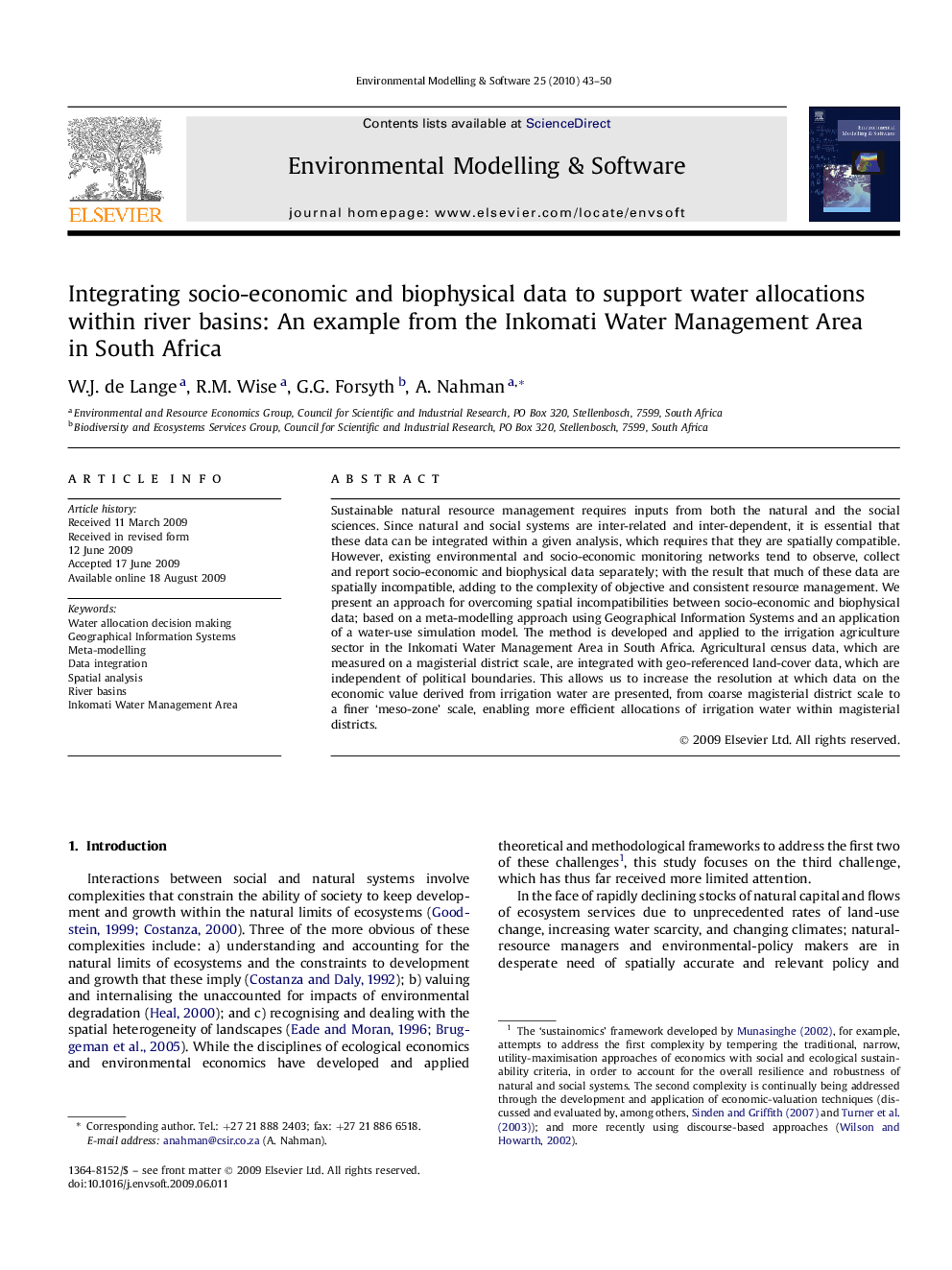| Article ID | Journal | Published Year | Pages | File Type |
|---|---|---|---|---|
| 569963 | Environmental Modelling & Software | 2010 | 8 Pages |
Sustainable natural resource management requires inputs from both the natural and the social sciences. Since natural and social systems are inter-related and inter-dependent, it is essential that these data can be integrated within a given analysis, which requires that they are spatially compatible. However, existing environmental and socio-economic monitoring networks tend to observe, collect and report socio-economic and biophysical data separately; with the result that much of these data are spatially incompatible, adding to the complexity of objective and consistent resource management. We present an approach for overcoming spatial incompatibilities between socio-economic and biophysical data; based on a meta-modelling approach using Geographical Information Systems and an application of a water-use simulation model. The method is developed and applied to the irrigation agriculture sector in the Inkomati Water Management Area in South Africa. Agricultural census data, which are measured on a magisterial district scale, are integrated with geo-referenced land-cover data, which are independent of political boundaries. This allows us to increase the resolution at which data on the economic value derived from irrigation water are presented, from coarse magisterial district scale to a finer ‘meso-zone’ scale, enabling more efficient allocations of irrigation water within magisterial districts.
